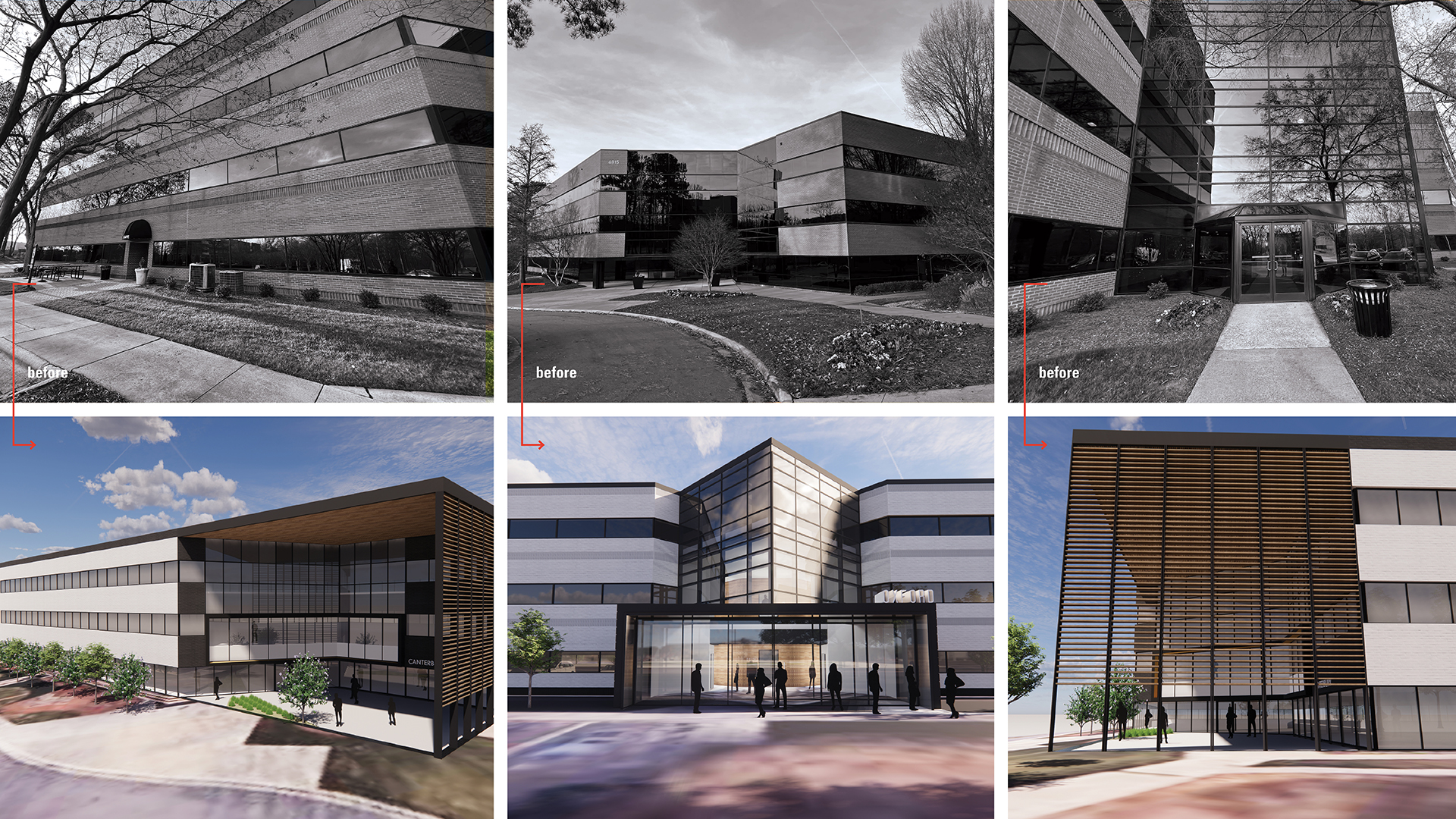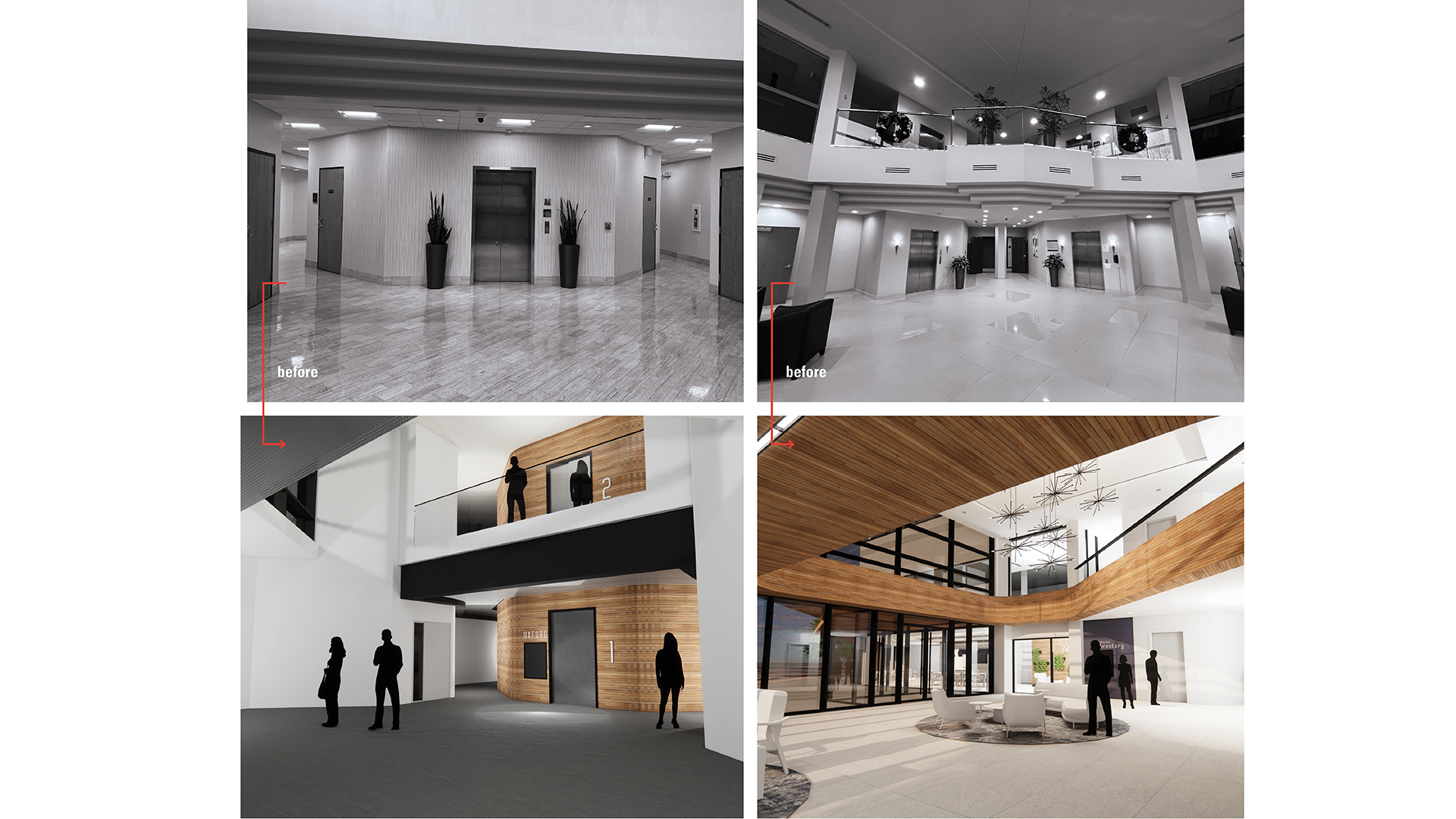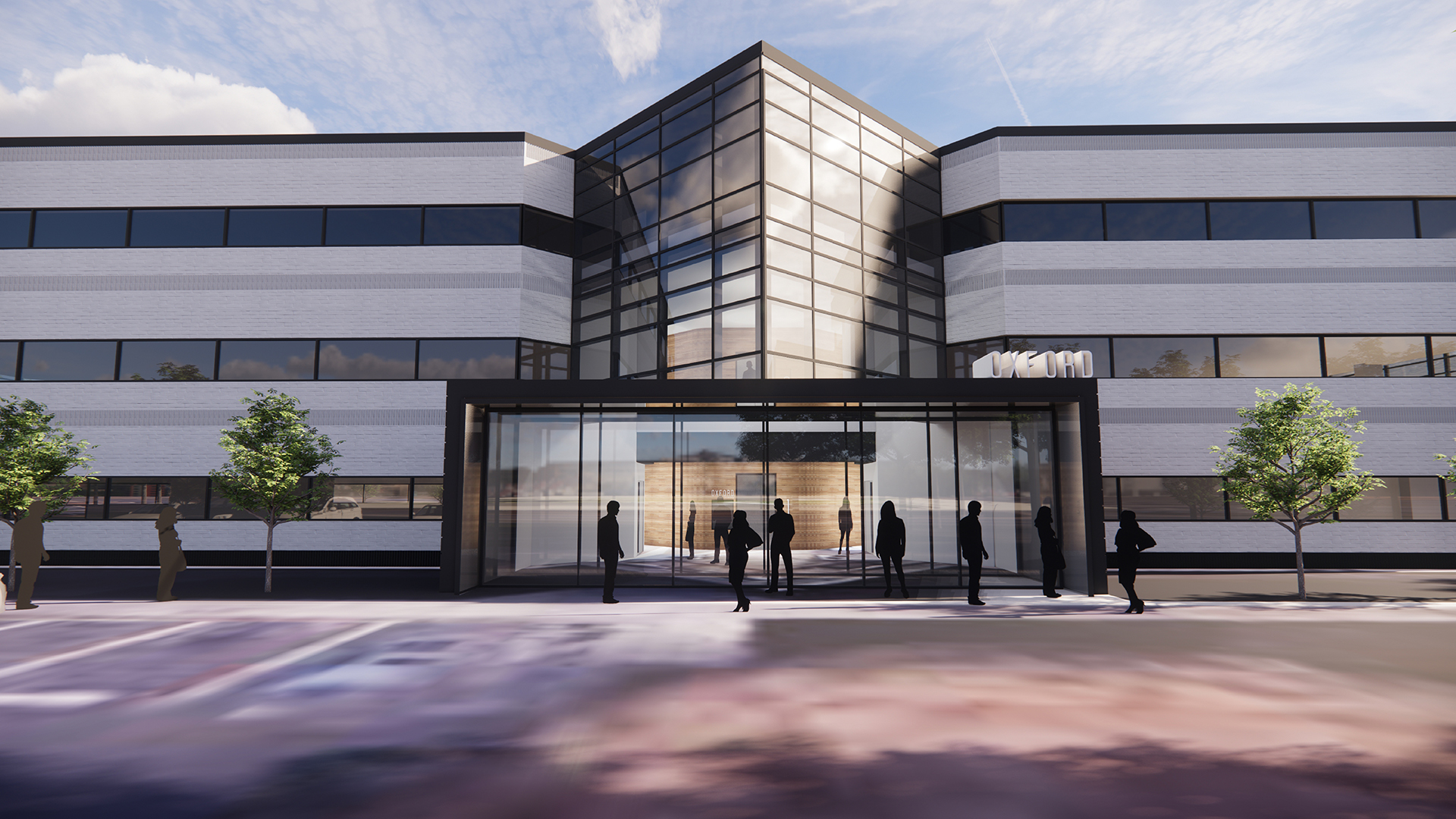You’ve seen them everywhere. Dated suburban office buildings immersed in asphalt wonderlands. Three-to-four story office buildings with lifeless facades, dark-banded privacy windows nestled in hardy, overgrown foundation planting. Places that lack life, inspiration, vibrancy – and tenants. Our team is determined to flip the lens and reimagine these suburban campuses as opportunity centers to build community. As designers, how can we help our clients entice tenants back to the suburban campuses by providing amenities that bring space to life?
REIMAGINING SUBURBAN OFFICE SPACE
The design challenges of the 1980s suburban landscapes can be repositioned and reimagined into attractive tenant space close to home, a prototype more relevant to today’s evolving working environment. perhaps even better, suburbia offers something urban spaces don’t always have – access to landscape and nature. Vast empty parking lots can be restructured to create safe pedestrian pathways; scaled for walking, biking and connecting. Surface lots can be re-envisioned as outdoor rooms and workspaces, promoting amenity spaces that create identity and unite campus community. Ground floor spaces, once hidden by overgrown plant material, can be thinned to provide visibility and promote safety, along with entrances identified by new portals or canopies. Old precast and brick facades can be simply painted or turned into works of art using murals, public art or graphics that provide branding opportunities to identify place and community. Indoor dated flooring and walls can be refreshed with new, modern materials, acoustic paneling and living walls. Lighting can be upgraded to add warmth and brightness.
RENEWED FOCUS ON BEING CLOSE TO HOME
The rules have changed as a response to lessons learned from three years of living a pandemic-centric lifestyle. Core values are now nonnegotiable with a focus on health leading the charge. As people navigate a renewed focus on balancing personal responsibilities, the necessity of commuting to more urban settings has been reconsidered. In fact, a recent U.S. Census Bureau report estimated that the average one-way travel time to work is a lofty 27.6 minutes. Furthering the argument against long commute times, “Gallup” (Global Research for Workplace) found that commutes of more than 30 minutes are linked to poor well-being, high stress and anger.
DESIGN STRATEGIES TO STRENGTHEN SUBURBAN ENVIRONMENTS
Through our experience, we know in-person collaboration is key to innovation. Ideas are born when people work together and brainstorm as a team. Micro-offices and coworking space in multiple locations may appeal to companies hoping to draw people back into an office. Convenient locations in the neighborhoods where employees live, provide ease and access like never before. People crave connection to outdoor space, convenience and work-life balance. Amenities bring spaces to life and solve for these innate desires.
Through these six design strategies, we can strengthen suburban environments.
- Wellness
Access to nature, fitness features, wellness clinics - Nutrition
Variety of healthy options (food trucks, cafes, grab and go) - Lifestyle
Everyday amenities to ease lifestyle (childcare, dry cleaning, pharmacy, salon, market) - Technology & Virtual Support
Curated environment with adjustable lighting, noise sensors, temperature controls - Commuter and transit connections
Connection to transit (walkable, bikeable, rail connections) - Flexible Work Environments
Variety/Scale/ Use – Diversity of spaces to facilitate multifunctional use
Design moves are strategic. They can be additive or subtractive and work in layers of scale to help users maximize use and benefit. From a landscape perspective, outdoor rooms can be carved into under-utilized parking lots; green paths can create wayfinding through former seas of asphalt; dense woodlands can be strategically thinned to create pockets of interest, such as tree houses, outdoor amphitheaters, workspaces or even a hammock retreat to calm the mind and recharge. Don’t underestimate the power of simple design moves. Suburbia reconsidered can become a true live, work and play model that reunites tenants with the workplace.
CASE STUDY: IMPERIAL CENTER
At Imperial Center in Durham, NC, our team worked with one client to reimagine their newly acquired collection of six office buildings with low vacancy. The initial ask was to consider a finishes refresh, but our approach looked at reimagining the buildings as campus setting: How could we create intuitive pedestrian connections between the buildings, leverage space in one or two of them to create a more contemporary café and coffee shop, and then connect them all together via outdoor pocket parks and workspaces that weave the campus together?

We envisioned a Phase 2 that would convert about half of the existing surface parking lot to build a new parking deck, another 100,000-square-foot office building, and an amenity complex with a café, fitness space and conference center to create a people-focused center. Coworking spaces, fresh paint jobs with modern signage, richly layered and activated interiors and landscapes, outdoor terraces and new modern entrances. Building lobbies with lounge and work furniture along with technology so that the square footage is maximized for use instead of being a large, wasted passthrough space.

Sharon Crawford contributed to this article.
Learn more about the working world and how it is redefining its culture. Little’s recently published Beyond Workplace III book explores the possibilities, the realities, and even the impossible.

